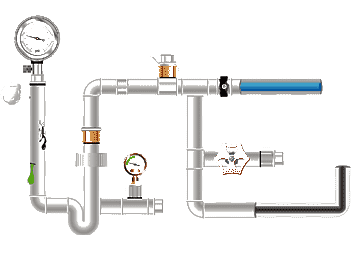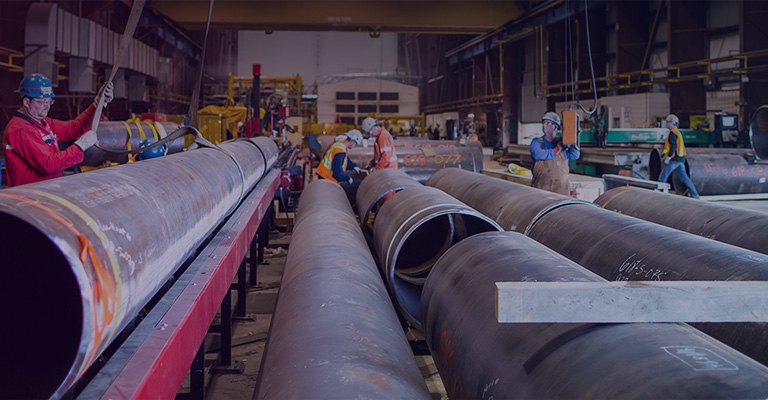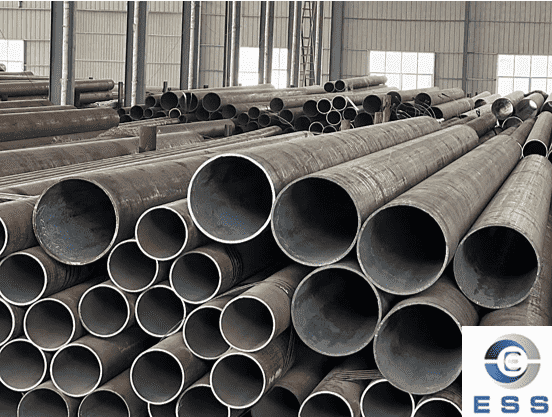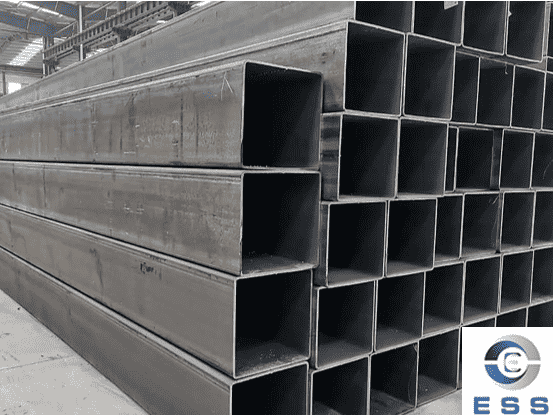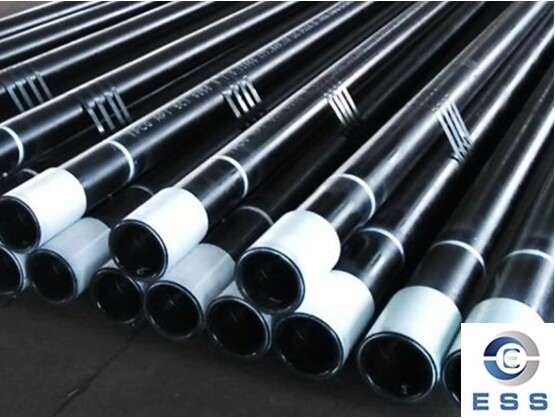Pickling treatment process of hydraulic system pipeline
The pickling of the hydraulic system pipeline is to remove the oxide and oil stains on the inner surface of the metal pipe through chemical action, so that the metal surface is smooth, and the hydraulic system is guaranteed to work reliably. Pipeline pickling must be done scientifically, normally, and reasonably in order to enable the hydraulic system to operate normally and give full play to its effectiveness. Pipeline pickling includes tank pickling and circulating pickling.
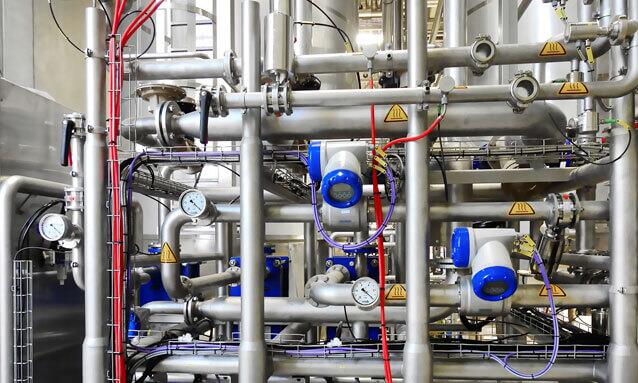
Precautions for pickling:
(1) Degrease before pickling, and take anti-acid measures for threads and sealing surfaces;
(2) Before the pipe is pickled, a pressure test should be carried out according to the requirements (the test pressure is 1.5-2 times the maximum working pressure). If it is unqualified, it can be repaired according to the above-mentioned welding seam repair regulations. After passing the pressure test, prepare for pickling;
(3) The concentration of the pickling solution and the ratio of each component should be determined according to the corrosion degree of the hydraulic pipe and the water quality of the pickling water;
(4) After pickling, if compressed air is used for oil spray protection, the compressed air used must be dry and clean;
(5) Pickling water must be clean;
(6) After the hydraulic tube is pickled and reset, it should be flushed as soon as possible, otherwise it should be oiled 2-3 times a week.
(7) For pipes coated with paint, paint remover should be used to remove the paint before pickling;
(8) Pickling should be carried out according to the degree of corrosion, acid concentration and temperature, and the pickling time should be well controlled, and excessive pickling should not be allowed;
Pipeline pickling method:
At present, both tank pickling method and hydraulic pipe circulation pickling method are used in construction.
1. Tank pickling method
Remove the installed hydraulic pipe, put it into the pickling tank after disassembly, and install it after passing the treatment. This method is suitable for large-diameter short pipes, straight pipes, easy to disassemble and small pipeline construction, such as pipelines in hydraulic devices such as pump stations and valve stations, and hydraulic systems with small on-site pipelines, all of which can use grooves Type pickling.
Tank pickling process and formula
Tank pickling: Generally, it is carried out according to the process of: degreasing→water washing→pickling→water washing→neutralization→passivation→water washing→drying→coating anti-rust oil (agent)→sealing.
(1) Degrease. The formula of degreasing liquid is: (NaOH)=9%~10%; (Na3P04)=3%; (sodium bicarbonate)
=1.3%; (Na2S03)=2%; the rest is water. The operating process requirements are: liquid temperature 70-80°C, soak for 4 hours.
(2) Rinse with water. Rinse with clean water with a pressure of 0.8MPa.
(3) pickling. The formula of acidic lotion is: HC1 is 13%~14%; (CH2)6N4 is 1%; the rest is water.
The operating process requirements are: soaking at room temperature for 1.5 to 2 hours.
(4) Rinse with water. Rinse with clean water with a pressure of 0.8MPa.
(5) Second pickling. The pickling agent formula is the same as above. The operating process requirements are: soak at room temperature for 5 minutes.
(6) neutralization. The formula of the neutralization solution is: NH4OH is diluted to a solution with a pH value of 10~11. Operating procedures
The requirements are: soak at room temperature for 2 minutes.
(7) Passivation. The passivation solution formula is: NaNO2 is 8%~10%; NH40H is 2%; the rest is water. operate
The process requirements are: soaking at room temperature for 5 minutes.
(8) Rinse with water. Rinse with pure water with a pressure of 0.8MPa.
(9) Quick drying. Dry with steam, superheated steam or hot air.
(10) Seal the nozzle. Secure with plastic pipe plugs or multiple layers of plastic sheeting.
If the hydraulic pipe treated by the above method is clean and the pipe wall is bright, it can be stored for about 2 months without rust; if it is well preserved, the time can be extended.
2. Circulating pickling method in the pipe
The hydraulic components are disconnected or removed from the installed hydraulic pipeline, and connected with hoses, hydraulic pipes, and flushing caps to form a flushing circuit. Acid pumps are used to pump acid liquid into the circuit for cyclic pickling. Pickling method is a relatively advanced construction technology in recent years. The pickling speed is fast, the effect is good, the process is simple, the operation is convenient, the pollution to the human body and the environment is reduced, the labor intensity is reduced, and the installation period of the hydraulic pipe is shortened. It solves the problem of difficult pickling of long and complex pipelines, and avoids the problem of secondary pollution during assembly that is prone to pickling of tanks. It is widely used in pipeline construction of large hydraulic system.
Cyclic pickling process and formula
During cyclic pickling, it is generally carried out in the following steps: water leak test → degreasing → water rinsing → pickling → rinsing → passivation → water rinsing → drying → coating with anti-rust oil.
(1) Leak test. Fill the leak test with compressed air at a pressure of 1 MPa.
(2) Degrease. The formula of the degreasing liquid is the same as that of the tank pickling process. The operating process requirements are: liquid temperature 40-50 ℃, continuous circulation for 3 hours.
(3) Gas cap. Use compressed air at a pressure of 0.8 MPa to spray the degreasing fluid.
(4) Rinse with water. Use 0.8MPa pressure water to wash off the remaining liquid.
(5) pickling. The pickling liquid formula is: HCl is 9%~11%; (CH2)6N4 is 1%; the rest is water. The operating process requirements are: 50min intermittent cycle at room temperature.
(6) neutralization. The formula of the neutralization solution is: NH4OH is diluted to a solution with a pH value of 9~10. The operating process requirements are: continuous circulation at room temperature for 25 minutes.
(7) Passivation. The formula of passivation solution is: (NaN02)=10%~14%; the rest is water. The operating process requirements are: 30min intermittent cycle at room temperature.
(8) Rinse with water. Rinse continuously for 10 minutes with pure water at a pressure of 0.8MPa and a temperature of 60°C.
(9) dry. Blow dry with superheated steam.
(10) Grease. Fill hydraulic oil with hydraulic pump.
3. Circular flushing of hydraulic pipes
After the hydraulic pipes pass the pickling, the pipes can be connected together on a special flushing table for circular flushing. The precautions are as follows:
(1) When the flushing oil is added to the oil tank, it should be filtered, and the filtration accuracy should not be lower than the filtration accuracy of the system;
(2) The fuel tank should be inspected before adding flushing fluid, and there should be no visible dirt inside;
(3) Use the applicable flushing oil for flushing hydraulic oil pumps, oil tanks, filters, etc.;
(4) During the flushing process, it is advisable to use methods such as changing the flushing direction and vibrating to close the circuit to enhance the flushing effect;
(5) The flow rate of the flushing oil should make the oil in a turbulent state; its temperature should not exceed 50°C when high water-based fluid is used. When using hydraulic oil, it should not exceed 60°C. Within the above temperature limit, the flushing oil temperature should be high.
(6) Always pay attention to observe the pollution of the filter, and replace it immediately once the pollution level is reached.
(7) The flushing fluid must be drained after the hydraulic pipe is flushed to pass, but when flushing with working medium, if the quality indicators of the flushing oil are still within the required range after flushing, it can be retained;
(8) After the hydraulic pipe is flushed, both ends should be immediately wrapped with a clean plastic cloth;
(9) The flushing oil should be compatible with the working medium of the system and the materials of all seals in the system, and its viscosity should be low;
4. Flushing oil flushing
For flushing oil flushing, attention should be paid to the flow control, pressure control, temperature control, cleanliness control and flushing result judgment of flushing oil. Generally, flushing oil with lower viscosity is used for flushing.
Flush Oil Flow Control
The flushing pump is selected according to the flow velocity when the liquid flow in the larger pipe diameter in the flushing pipeline is in a turbulent state and the sum of the cross-sectional areas of the branch pipes when the pipelines are connected in parallel, and a high-pressure vane pump is generally used. The flow control of flushing oil includes two parts: bypass flow regulation and branch flow regulation. 1) Bypass flow regulation. Bypass setting The flow rate of the flushing pump actually selected is generally larger than the design flow rate, so a bypass must be used to divert the flow. When flushing, open the shut-off valve to the maximum and then start the flushing pump, and then gradually adjust the size of the shut-off valve switch to achieve the best flushing effect. 2) Branch flow regulation. When flushing, try to ensure that the liquid in each branch is in a turbulent state. There are stop valves before and after each branch to adjust the flow of flushing oil. If necessary, a flow meter can be installed on the main pipeline to confirm.
Flushing oil pressure control
The flushing oil pressure is controlled at 4-6MPa. For flushing circuits with long pipelines, thin pipe diameters, sudden changes in pipe diameters, or multiple bends, increase the number of branches to shorten the length of the flushing pipeline and reduce pressure loss. At the same time, adjust the size of the front and rear cut-off valve switches of each branch to realize the switching flushing of the branch.
Flush oil temperature control
Flushing oil temperature and temperature difference have an important impact on the flushing effect. In addition, when the size of the fine particles in the flushing oil is less than 0.005IJ,m, the temperature increase and the existence of the electric field can accelerate the transformation of small particles into large particles, making them easy to be filtered out. Therefore, the temperature of the flushing oil should be changed frequently during the flushing process, and the temperature of the flushing oil should be increased as much as possible without exceeding the dangerous temperature. Considering various factors, control the flushing oil temperature within 25-60cc.
Oil cleanliness control
Domestic filter elements are used in the initial stage of flushing, and imported filter elements are used in fine filtration to reduce costs. Determine the replacement time of the filter element according to the pollution degree of the pipeline and the results of online detection. At the same time, care should be taken to prevent the flushing oil from being shared with magnesium, lead, zinc and filter paper and lose its original hydraulic medium characteristics, and attention should be paid to replace the filter element when the pressure difference between the inlet and outlet of the oil filter is greater than 0.35MPa during flushing. Set a coarse filter before flushing the pump to prevent large particles of impurities from damaging the flushing pump. Set double filters before the flushing circuit to avoid contamination of the clean hydraulic system, especially for some hydraulic systems that only require flushing. Set a filter after the flushing circuit to prevent impurities in the flushing circuit from flowing into the oil tank.
Flush result judgment
There are two sampling methods for judging the flushing results: one is to take flushing oil samples from a specific sampling port (on the oil return line of the oil return filter) according to the specified time for instrument testing and inspection; the other is to select according to the type and characteristics of the system. A filter with a certain precision is placed at the oil return port of the flushing circuit to collect all the impurities flushed back, and check it every 2 to 4 hours. When the nature and shape of impurities do not affect the function of the system, the flushing is qualified.
5. Pickling quality inspection
The quality inspection of pickling is very important. After pickling correctly, there should be no foreign matter attached to the inner wall of the tube. If it is washed with hydrochloric acid, nitric acid or sulfuric acid, the inner wall of the tube should be grayish white; if it is pickled with phosphoric acid, the inner wall of the tube should be grayish black.
Read more: Joint Models of American Seamless Hydraulic Piping or Difference between seamless pipe and seam pipe









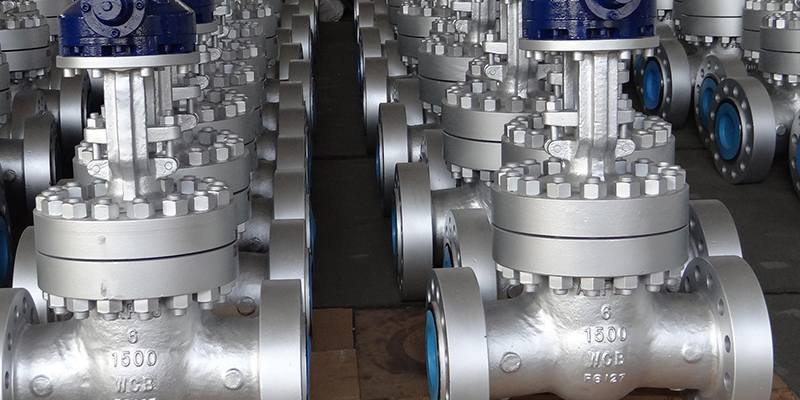
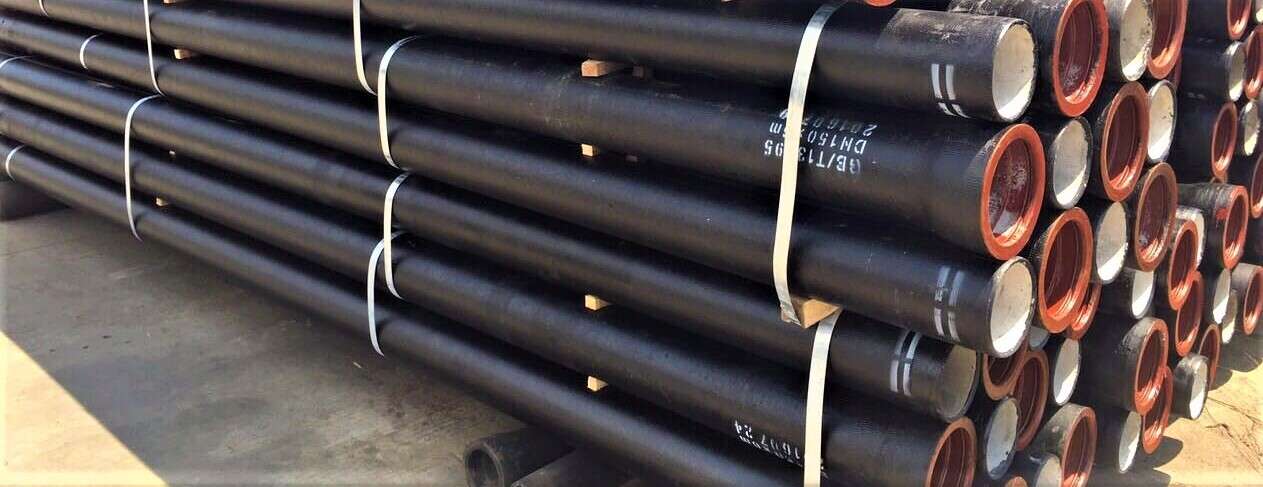


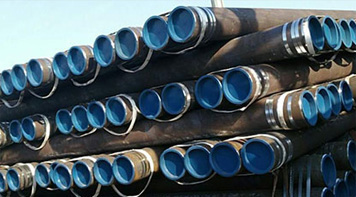 Eastern Steel Manufacturing Co.,Ltd not only improve product production and sales services, but also provide additional value-added services. As long as you need, we can complete your specific needs together.
Eastern Steel Manufacturing Co.,Ltd not only improve product production and sales services, but also provide additional value-added services. As long as you need, we can complete your specific needs together.
